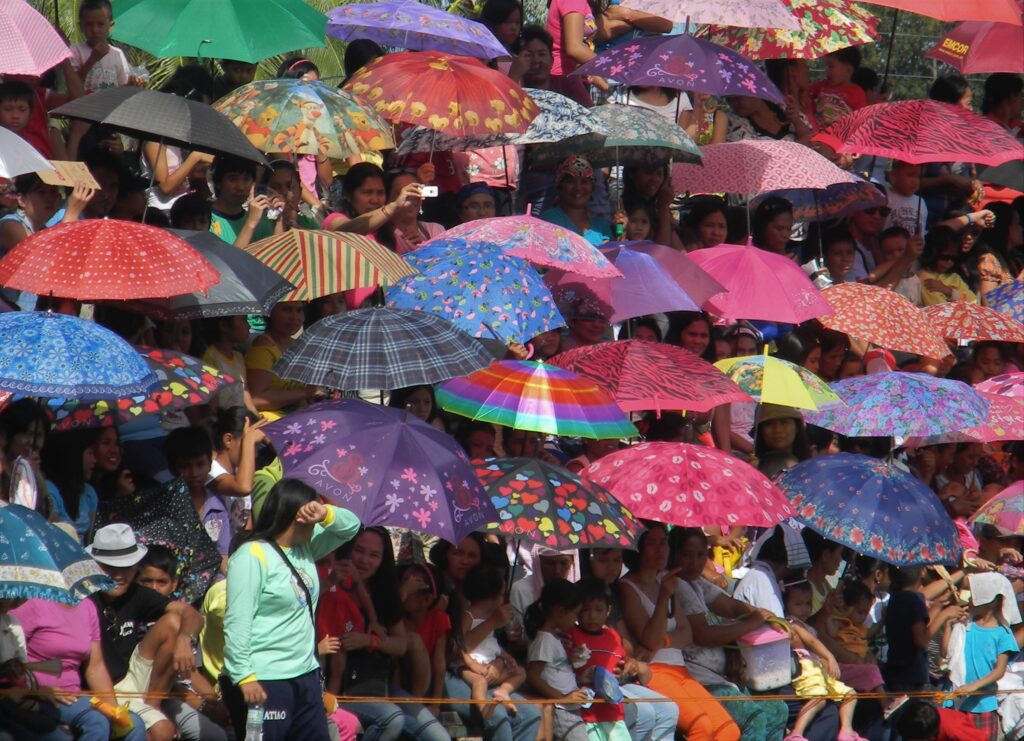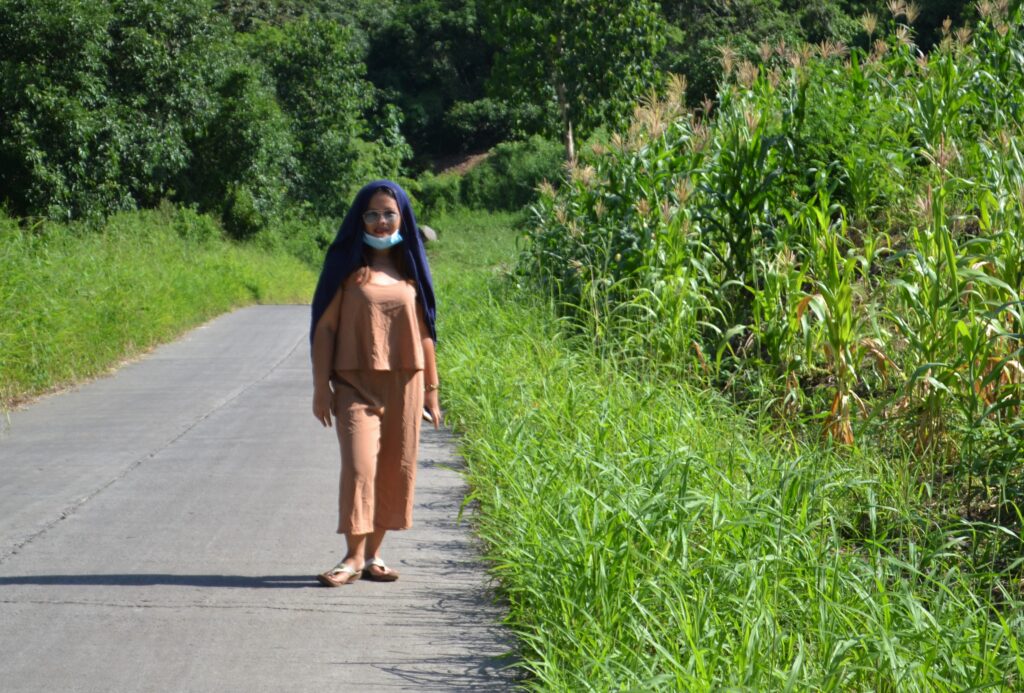Text and Photos by Henrylito D. Tacio
Two days ago, Arman went out bike riding later than he normally did. Instead of biking at either 6 or 7 am, he did it at 10 am this time — and on an extremely hot day. He went to the path he usually followed normally two to three times a week. Since it was a holiday, he biked a little farther than normal.
Then something unusual happened. In no more than two minutes, he started to see spots and felt light-headed. He decided to get off his bike under the shade of a tree. He started to feel disoriented and leaned up against the trunk before passing out. His head hit something hard; fortunately, he was still wearing his bike helmet.
Arman was so lucky that a number of strangers stopped and stayed with him. They gave him their water and sports drink, and he sat for a while. He felt nauseous and vomited up all the water he had ingested. Two people insisted that he should not ride the bike. Another one brought his vehicle, put the bike at the back, and drove Arman back to his home.
“It was unbelievable,” he recalled. “I don’t remember the faces of the people who helped me walk me through what had happened. I still can’t believe it happened to me. In hindsight, it makes perfect sense. I had no fluids prior to my ride and didn’t start to drink until I had been riding for about a half an hour in extreme heat and humidity. I was very fortunate.”
Arman was fortunate but not Dante, who died due to a heat stroke. No one around him realized what was happening; he was hallucinating, stumbling around, acting like he was drunk or something.
There was no one in the house as they were attending a birthday party some 10 kilometers away. When they returned home, they found Dante unconscious. They immediately took him to the hospital, where he died several hours later.

Use an umbrella 
Cover yourself when walking under the heat of the sun
“Do not assume anything,” the doctor told some of the family members. “Especially during summer and the person has been out in the open under the sun for several hours.”
During the summer months, the heat of the sun becomes so intense that it can result in a person suffering from heatstroke. “Heat stroke occurs when the body becomes unable to control its temperature: the body’s temperature rises rapidly, the sweating mechanism fails, and the body is unable to cool down,” said the Department of Health (DOH).
Classified under “heat-induced illness,” heatstroke is a medical emergency. “When heat stroke occurs, the body temperature can rise to 41⁰ Celsius or higher within 10 to 15 minutes,” DOH said. “Heat stroke can cause death or permanent disability if emergency treatment is not given.”
Heatstroke has nothing to do with stroke or brain attack. “The term ‘stroke’ in heat stroke is a misnomer since it does not involve a blockage or hemorrhage of blood flow to the brain,” explains Dr. Edward C. Tordesillas, clinical associate professor at the Department of Family and Community Medicine of the Philippine General Hospital. “‘Stroke’ is the general term used to describe decreased oxygen flow to an area of the brain and the heart.”
Dr. Tordesillas considered heat stroke as “the most serious form of heat injury.” He urged that those who suffer from it must be given first aid until paramedics arrive. “Delay in the treatment of heat stroke can kill or cause damage to the brain and other internal organs,” he warned.
Most of those who suffer from heatstroke are elderly people over age 50, particularly those who are taking medications for heart, lung, and kidney problems. “(Heat stroke) may take a toll on healthy young athletes,” Dr. Tordesillas said.
According to Dr. Tordesillas, the common signs and symptoms of heat stroke include the following: a high body temperature of 40 degrees Celsius or higher; behavioral changes, which include confusion, agitation, slurred speech, irritability, delirium, seizures that may lead to coma; and nausea and vomiting.
Other symptoms are flushed, dry skin, red-faced; muscle weakness and cramps; rapid and shallow breathing; increase in heart rate/rapid heartbeat; headache, usually throbbing; dizziness and light-headedness; and lack of sweating despite the heat.
Dr. William C. Shiel, Jr., in a medicine.net feature, symptoms of heat stroke can sometimes mimic those of heart attack or other conditions. Sometimes a person experiences symptoms of heat exhaustion before progressing to heat strokes.
Among those who are especially prone to heatstroke are alcoholics, people with chronic illnesses like heart disease; obesity, or overweight; having uncontrolled diabetes; suffering from Parkinson’s disease; using certain medications such as diuretics and antihistamines, and taking some illegal psychoactive drugs.
Those living in highly-urbanized areas like Metro Manila, Metro Cebu, and Davao are most likely to suffer from heatstroke during a prolonged heatwave, particularly if there are stagnant atmospheric conditions and poor air quality. In what is known as the “heat island effect,” asphalt and concrete store heat during the day and only gradually release it at night, resulting in higher nighttime temperatures.
“Help a person who might be suffering from heat stroke,” DOH urged. Here are some of the things you can do: call for medical assistance immediately; move the sick person to a cool shaded area; soak his/her clothes with water; spray, sponge, or shower him/her with water; and fan the body.
Dr. Benny Atienza of the Philippine Medical Association advised people must abhor eating food that is salty, high in cholesterol, and rich in carbohydrates to avoid heatstroke.
Dr. Willie T. Ong, an internist-cardiologist who is a staunch advocate of a healthy lifestyle, urges Filipinos to eat watermelon. “(It) has long provided a safe source of fluid for many desert regions in the world,” he explains. “Watermelon’s cooling effect comes from its component citrulline, which is converted to arginine in the body.”
An ounce of prevention is better than an ounce of cure, so goes a saying. “When the heat index is high, it’s best to stay in an air-conditioned environment,” said the Mayo Clinics. Now, if you must go outdoors, you can prevent heat stroke by taking these steps:
· Wear lightweight, light-colored, loose-fitting clothing and a wide-brimmed hat.
· Use a sunscreen with a sun protection factor (SPF) of 30 or more.
· Drink extra fluids. To prevent dehydration, it’s generally recommended to drink at least eight glasses of water, fruit juice, or vegetable juice per day. Because heat-related illness also can result from salt depletion, it may be advisable to substitute an electrolyte-rich sports drink for water during periods of extreme heat and humidity.
· Take additional precautions when exercising or working outdoors. The general recommendation is to drink 24 ounces of fluid two hours before exercise and consider adding another 8 ounces of water or sports drink right before exercise. During exercise, you should consume another 8 ounces of water every 20 minutes, even if you don’t feel thirsty.
· Reschedule or cancel the outdoor activity. If possible, shift your time outdoors to the coolest times of the day, either early morning or after sunset.
Other strategies for preventing heat stroke include:
· Monitor the color of your urine. Darker urine is a sign of dehydration. Be sure to drink enough fluids to maintain very light-colored urine.
· Measure your weight before and after physical activity. Monitoring lost water weight can help you determine how much fluid you need to drink.
· Avoid fluids containing caffeine or alcohol because both substances can make you lose more fluids and worsen heat-related illness. Also, do not take salt tablets unless your doctor has told you to do so. The easiest and safest way to replace salt and other electrolytes during heatwaves is to drink sports beverages or fruit juice.
· Check with your doctor before increasing liquid intake if you have epilepsy or heart, kidney, or liver disease, are on fluid-restricted diets; or have a problem with fluid retention.
“If you live in an apartment or house without fans or air conditioning, try to spend at least two hours each day – preferably during the hottest part of the day – in an air-conditioned environment,” the Mayo Clinic suggests. “At home, draw your curtains, shades, or blinds during the hottest part of the day, and open windows at night on two sides of your building to create cross-ventilation.”

